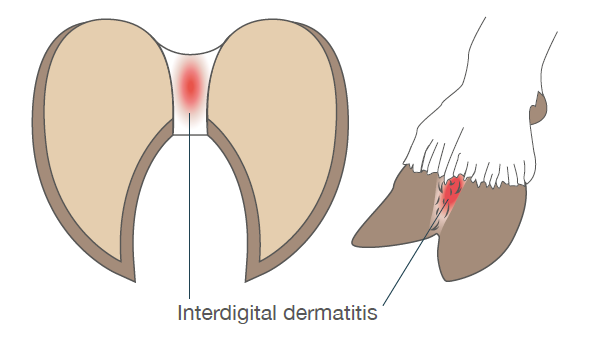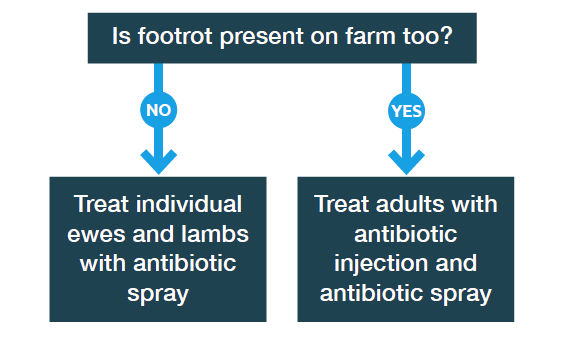- Home
- Knowledge library
- Diseases that cause lameness in sheep: scald
Diseases that cause lameness in sheep: scald
Find out how to identify, prevent and treat scald.
Back to: Reducing lameness in sheep
Cause
Scald is caused by the bacterium Dichelobacter nodosus, which also causes severe footrot.
Infection occurs through skin damaged by:
- Abrasion; for example, harsh or rough pastures, thorns, thistles, hedge trimmings or stubble
- Prolonged exposure to moisture, causing softening of the skin

Scald is more likely to occur when sheep are at high stocking densities – including when ewes are with lambs. Transmission is more likely in areas where sheep gather; for example, at feed troughs, favoured areas of a field or in housing.
Treatment

Where incidence is high, foot-bathe the group and move to pasture that has been sheep-free for two weeks, if this is possible.
Prevention
Farmers have found that controlling footrot in ewes reduces scald level in lambs. If done properly, regular foot-bathing can help to prevent and control spring epidemics in lambs.
- Use a foot-bath as soon as lambs are large enough to go through it; this may help to minimise the number of lame sheep once the outbreak has started
- Make sure that feet are as clean as possible before foot-bathing. Use the correct concentration of chemicals and stand the sheep in the foot-bath for the correct length of time (see product label)
- To be effective, sheep must stand on a clean, dry, hard area for 30 minutes after foot-bathing. Where possible, return the group to new pasture
- Avoid putting lambs on areas that are heavily contaminated with faeces
- Reducing the number and duration of handling events and improving underfoot conditions wherever possible can reduce the spread
- Apply suitable disinfectant around creep feeders, water troughs and gateways

